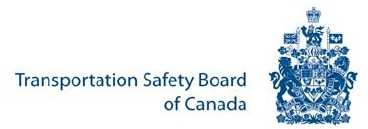Fri, Oct 20, 2017
Airplane Sustained Damage To One Wing, Returned To Service Quickly
The Transportation Safety Board of Canada has officially opened an investigation into an apparent collision between a drone and a commercial aircraft with passengers aboard.

According to the TSB, on October 12, 2017, a Beech King Air A100 operated by Skyjet M. G. was on an instrument flight rules flight from the Rouyn-Noranda (Quebec) airport (CYUY) to the Jean Lesage International Airport (CYQB) in Québec City, Quebec with 2 crew members and 6 passengers on board. The aircraft was approaching runway 24 and had just passed the final approach fix when the crew noticed a drone – an unmanned aerial vehicle (UAV) – at the extremity of the left wing.
The aircraft struck the UAV at an altitude of 1500 feet and the crew declared an emergency. Aircraft rescue and firefighting services were deployed and the aircraft safely landed on runway 24. The aircraft inspection revealed a few scratches and some paint transfer on the top surface of the left wing and scrape marks on the de-icing boot. The aircraft was then returned to service. No one was injured.
Kristina Schoos has been appointed the Investigator in Charge for the probe. She has more than 15 years of experience as a helicopter pilot with various 702 and 703 operators, during which she has accumulated more than 6000 hours of flying time across the country on 6 different types of helicopter including the Bell 206 and Aerospatiale AS350. In the course of her career, she has been responsible for flight and ground training and worked as Assistant chief-pilot. Kristina also holds a Bachelor of Science in Nursing.
There are 3 phases to a TSB investigation:
- Field phase: a team of investigators examines the occurrence site and wreckage, interviews witnesses and collects pertinent information.
- Examination and analysis phase: the TSB reviews pertinent records, tests components of the wreckage in the lab, determines the sequence of events and identifies safety deficiencies. When safety deficiencies are suspected or confirmed, the TSB advises the appropriate authority without waiting until publication of the final report.
- Report phase: a confidential draft report is approved by the Board and sent to persons and corporations who are directly concerned by the report. They then have the opportunity to dispute or correct information they believe to be incorrect. The Board considers all representations before approving the final report, which is subsequently released to the public.
(Source: TSB)
More News
He Attempted To Restart The Engine Three Times. On The Third Restart Attempt, He Noticed That Flames Were Coming Out From The Right Wing Near The Fuel Cap Analysis: The pilot repor>[...]
Make Sure You NEVER Miss A New Story From Aero-News Network Do you ever feel like you never see posts from a certain person or page on Facebook or Instagram? Here’s how you c>[...]
From 2009 (YouTube Edition): Leading Air Show Performers Give Their Best Advice for Newcomers On December 6th through December 9th, the Paris Las Vegas Hotel hosted over 1,500 air >[...]
Aero Linx: NASA ASRS ASRS captures confidential reports, analyzes the resulting aviation safety data, and disseminates vital information to the aviation community. The ASRS is an i>[...]
“For our inaugural Pylon Racing Seminar in Roswell, we were thrilled to certify 60 pilots across our six closed-course pylon race classes. Not only did this year’s PRS >[...]
 NTSB Final Report: Rutan Long-EZ
NTSB Final Report: Rutan Long-EZ ANN FAQ: Turn On Post Notifications
ANN FAQ: Turn On Post Notifications Classic Aero-TV: ICAS Perspectives - Advice for New Air Show Performers
Classic Aero-TV: ICAS Perspectives - Advice for New Air Show Performers ANN's Daily Aero-Linx (06.28.25)
ANN's Daily Aero-Linx (06.28.25) Aero-News: Quote of the Day (06.28.25)
Aero-News: Quote of the Day (06.28.25)



